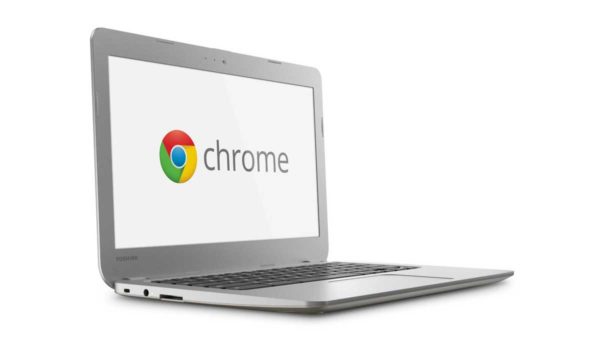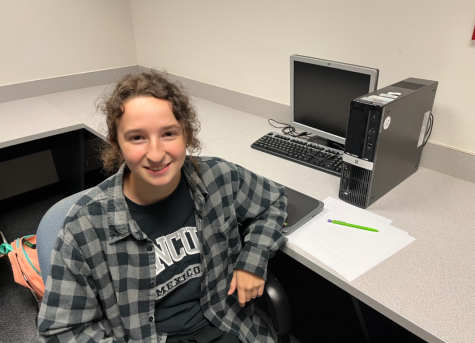As tech continues to develop, educators look for best usage

The use of technology can be quite beneficial, but also damaging to society.
May 31, 2023
Although technology had already been incorporated in the classroom beforehand, its use greatly expanded during the pandemic and remote learning. Now, with the continuing development of AI tools, educators and researchers are attempting to determine how and when to best use technology in the school.
“I do think that if we are thinking about technology in terms of professional development and preparing our students for the world of work, then technology is here to stay, and I think it’s certainly needed for them to excel,” Tinukwa Boulder, director of innovative technologies and online learning at the University of Pittsburgh, said.
Boulder believes schools should find a balance with technology, though.
“We do need to kind of figure out ways in which we can use technology to support teaching and learning. But there are times when technology doesn’t have a space right there, times that we need to go back to the old pen and pencil,” Boulder said.
As the director of communication, innovation, and advancement for the district, Dr. Janeen Peretin considers how teachers can incorporate technology at all grade levels.
“You should be engaged in your learning at all times,” Peretin said. “There are state standards, but I think we should start thinking about how what we’ve always done may not work anymore.”
Peretin recognizes that students are easily bored with the way that content was taught in earlier years, so she wants to utilize technology in a positive way that can help them succeed.
“Our biggest challenge as educators right now is figuring out what changes we can make to the model to meet you where you’re at right now,” Peretin said.
Social studies teacher Kathleen Temme believes there are positives and negatives to technology in classrooms.
“I think on the positive side we have a lot more tools in our toolbox. I think there’s a lot more stuff we can do with students to keep them engaged, get them information, and keep them organized,” Temme said.
But between students using tech in school and being on their phones outside of school, teens are surrounded by screens.
A New York Times article reported on a Common Sense study that found that overall screen use among teens and tweens had increased by 17 percent from 2019 to 2021, growing more rapidly than in the four years prior. On average, daily screen use went up among tweens (ages 8 to 12) to five hours and 33 minutes from four hours and 44 minutes. For teens, it rose to eight hours and 39 minutes from seven hours and 22 minutes.
Much of that screen time is devoted to social media. Peretin sees the negative impact social media has on children.
“I think social media in high school and middle school is probably more of a distraction than anything,” she said. “I think it adds a whole new dimension to growing up.”
Although family and consumer science teacher Beth Fochtman appreciates the technology in her classroom, she feels that technology is present too often in children’s lives.
“I love certain aspects of technology, but I think we use it too much sometimes,” Fochtman said.
“We tend to use it so much to the point where children lose creativity.”
Temme also sees the effect on all that screen time on student learning.
“On the negative side, I think we’re starting to lose the human interactive piece,” Temme said. “It is very hard for me to keep students’ attention for longer than 10 minutes, maybe less.”
That observation is backed up by an experiment explained in another New York Times article. It showed that in 2004 people could maintain concentration on a task for an average of two and a half minutes before feeling the need to switch to another task. In 2012, the experiment was repeated and the time dropped to 75 seconds, and from there it has continued to decrease.
Increased screen use and that decreased attention span are also reflected in how people read on a screen.
“Screens are designed to make us read very quickly – to scan, skim and scroll. As a result, we don’t give the text our full attention and are more apt to miss information,” the article said.
“Traditionally, our brains tended to read print materials more slowly, in part because we were more likely to go back and double-check what we just read. That extra time lent itself to sophisticated mental processes like critical analysis, inference, deduction and empathy,” according to the article.
But simply going back to reading on a printed page won’t fix everything, said Maryanne Wolf, from the University of California, Los Angeles, Graduate School of Education and Information Studies.
“Our brains adapt to read in the style of the medium we use most often, and chances are you spend a lot more time reading on a screen than you do on paper,” Wolf said. So most people today likely read in print the same way they read on screen
As to how to recapture those “deep reading” practices, Wolf recommends that people try to work up to being able to slowly and carefully read a physical book for 20 minutes while their phones are off and other distractions are limited.
Moving forward, Katrina Bartow Jacobs, associate professor in the School of Education at the University of Pittsburgh, said she views technology as a tool.
“Technology is a tool, just like a book or a pencil. In the same way as other tools, we have to make sure it fits the task required,” Jacobs said. “In many ways technology has opened up vast possibilities for education – it allows people to connect across space and time, allows access to materials and contexts (such as museums and libraries) that used to be geographically restricted.”
As a practicing teacher, she is choosing to embrace what changes it may bring.
“One thing I am particularly interested in as an English teacher educator is the ways that technology allows us to create and share texts and ideas in new ways,” Jacobs said.
A lot has been written about AI technologies like Chat GPT and how students now can pass off AI generated work as their own. Yet Jacobs thinks these tools can be used to help students prepare for the future.
“With the new adaptation of tools like Chat GPT and other AI elements, it’s easier to ‘fake’ a product that is meant to demonstrate critical thinking or learning. But I also think these tools have enormous potential,” Jacobs said.
Students have seen the benefit of tech in their education, while some also have mixed feelings.
“I think that giving it to elementary schoolers, specifically kindergarten through fourth grade, is a huge mistake because putting them in front of a screen takes away from a vital part of elementary school, which is learning and developing people skills,” senior Jayden Wisniewski said.
Sophomore Samantha Niggel believes technology and more traditional methods can be useful in school.
“Both options have their benefits, and, truly, I think the best option depends on the person,” Niggel said.



